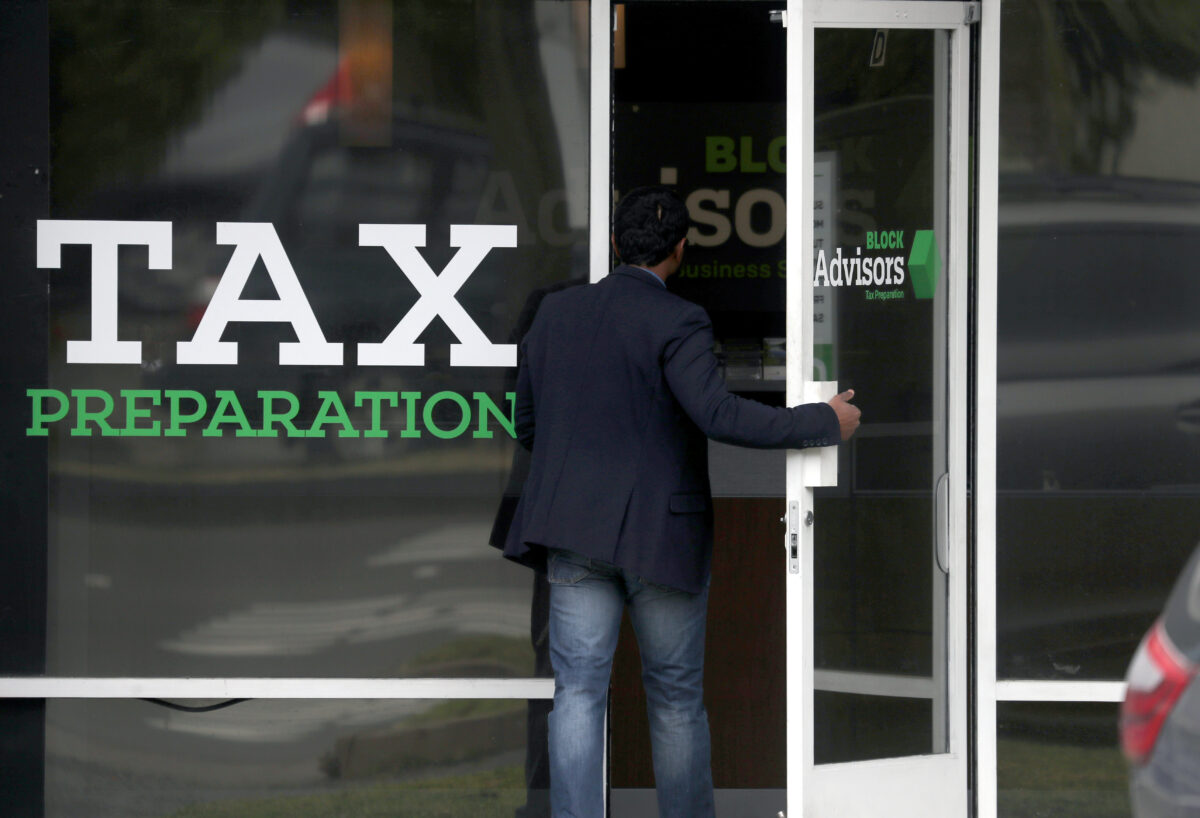Rebate Checks Wrong Way to Help California Taxpayers
CommentaryLike most Californians, any day now my bank account will be augmented by the tax relief the Legislature passed earlier this year. Gov. Gavin Newsom’s office enthused on Oct. 6, “Starting tomorrow, $9.5 billion in Middle Class Tax Refund payments will begin going out to Californians, with refunds of up to $1,050 that will benefit millions of eligible Californians under the largest such program in state history.” The program will send about 8 million direct deposits and 10 million debit cards. The refunds also will go to illegal immigrants. Any refund of my hard-earned tax dollars is welcome, especially in this severely over-taxed state. But Newsom’s explanation shows why this is the wrong way to help taxpayers. “We know it’s expensive right now, and California is putting money back into your pockets to help,” he said. “We’re sending out refunds worth over a thousand dollars to help families pay for everything from groceries to gas.” But this is a short-sighted way to help people. Although the extra cash will help somewhat, it won’t change the behaviors necessary to help the overall economy. That’s because it’s a one-shot deal. The $100 billion surplus, or at least the $9.5 billion used for these tax refunds, should have been used to restructure the tax code to promote investments in creating new businesses and jobs. Those new businesses and jobs, in turn, broaden the tax base. And a broader tax base in the end actually increases tax receipts. That is, although tax rates go down, tax receipts go up. A big reason is because companies and rich people stop leaving the state. They stay here, expand, and pay more taxes. Let’s look at the Legislative Analyst’s Office’s “The 2022-23 Budget: May Revenue Outlook.” For what’s called the Big Three revenue sources, it projected, for the fiscal year 2022-23, which began on July 6: Revenue Outlook, in Billions Personal Income Tax $140.9 Corporation Tax $34.8 Sales Tax $33.3 Total $209.0 One more thing. The “Updated 2022-23 ‘Big Three’ Revenue Outlook,” just released Oct. 10, estimated revenues will fall short of the May projection by $5 billion. Not a huge amount, so we can ignore that here. Now, a better way to rebate that $9.5 billion to taxpayers would have been to cut—permanently—one of the Big Three taxes by that amount. For example, the Personal Income Tax, with receipts projected at $140.9 billion, could have been cut back $9.5 billion, to $131.4 billion. That would have been a 6.74 percent cut in tax revenues. Most middle-class taxpayers now are in the 9.3 percent tax bracket. So cut that rate by 6.74 percent. Here’s the formula: 9.3 – (0.0674 * 9.3) = 8.67. You get a new middle-class tax rate of 8.67 percent. A reduction of 0.63 percentage points from the current 9.3 percent rate. That’s substantial. If your middle-class family state income tax payment is $7,000 a year, you would save $474 a year—every year. Again, the cut has to be permanent, not just for one year. Alternatively, the corporate or sales taxes could be cut. Let’s leave aside the corporate tax because it would be considered “helping the rich.” A customer enters a Block Advisors tax preparation office in San Anselmo, Calif., on April 15, 2019. (Justin Sullivan/Getty Images) For the sales tax, state collections are projected to be $33.3 billion a year. According to the California Department of Tax and Fee Administration, as of Oct. 1, the statewide sales tax rate is 7.25 percent. Local jurisdictions can add to that. But we’ll just stick with the state portion. We’re again going to cut the tax amount by $9.5 billion. So the $33.3 billion sales tax receipts would drop to $23.8 billion. And that $9.5 billion cut comes to 28.5 percent of $33.3 billion. So we could cut the state 7.25 percent sales tax rate by 28.5 percent. (7.25 * 0.285 = 2.07). We then reduce the 7.25 percent rate by 2.07 percentage points. Which equals: 5.18 as the new sales tax rate. Cutting 2 percentage points off all purchases—permanently, again—would save everybody money from their budgets. That would be money in their “pockets,” as the governor says. Better yet, it would be money they could invest and depend on investing in future years as the cut would be permanent. Or businesses could invest the savings in creating new jobs. This, by the way, is the method behind President Reagan’s 1981 tax cuts, which reduced the top federal income tax rate from 70 percent to 50 percent by 1983; and further to 28 percent in 1986. It turbocharged the U.S. economy and ended the 1970s Jimmy Carter “malaise” economy of stagflation—stagnation plus inflation. Similar federal cuts now would lift us out of the current stagflation. But at the state level, they especially would help California’s economy. Admittedly, it means going through the logic above. But we did it at the federal level in 1981. I remember the time well, because I got out of the U.S. Army in February 1982 and went to Washington, D.C. to resume my

Commentary
Like most Californians, any day now my bank account will be augmented by the tax relief the Legislature passed earlier this year. Gov. Gavin Newsom’s office enthused on Oct. 6, “Starting tomorrow, $9.5 billion in Middle Class Tax Refund payments will begin going out to Californians, with refunds of up to $1,050 that will benefit millions of eligible Californians under the largest such program in state history.”
The program will send about 8 million direct deposits and 10 million debit cards. The refunds also will go to illegal immigrants.
Any refund of my hard-earned tax dollars is welcome, especially in this severely over-taxed state. But Newsom’s explanation shows why this is the wrong way to help taxpayers.
“We know it’s expensive right now, and California is putting money back into your pockets to help,” he said. “We’re sending out refunds worth over a thousand dollars to help families pay for everything from groceries to gas.”
But this is a short-sighted way to help people. Although the extra cash will help somewhat, it won’t change the behaviors necessary to help the overall economy. That’s because it’s a one-shot deal.
The $100 billion surplus, or at least the $9.5 billion used for these tax refunds, should have been used to restructure the tax code to promote investments in creating new businesses and jobs. Those new businesses and jobs, in turn, broaden the tax base. And a broader tax base in the end actually increases tax receipts.
That is, although tax rates go down, tax receipts go up. A big reason is because companies and rich people stop leaving the state. They stay here, expand, and pay more taxes.
Let’s look at the Legislative Analyst’s Office’s “The 2022-23 Budget: May Revenue Outlook.” For what’s called the Big Three revenue sources, it projected, for the fiscal year 2022-23, which began on July 6:
Revenue Outlook, in Billions
- Personal Income Tax $140.9
- Corporation Tax $34.8
- Sales Tax $33.3
- Total $209.0
One more thing. The “Updated 2022-23 ‘Big Three’ Revenue Outlook,” just released Oct. 10, estimated revenues will fall short of the May projection by $5 billion. Not a huge amount, so we can ignore that here.
Now, a better way to rebate that $9.5 billion to taxpayers would have been to cut—permanently—one of the Big Three taxes by that amount. For example, the Personal Income Tax, with receipts projected at $140.9 billion, could have been cut back $9.5 billion, to $131.4 billion.
That would have been a 6.74 percent cut in tax revenues. Most middle-class taxpayers now are in the 9.3 percent tax bracket. So cut that rate by 6.74 percent. Here’s the formula: 9.3 – (0.0674 * 9.3) = 8.67.
You get a new middle-class tax rate of 8.67 percent. A reduction of 0.63 percentage points from the current 9.3 percent rate. That’s substantial.
If your middle-class family state income tax payment is $7,000 a year, you would save $474 a year—every year. Again, the cut has to be permanent, not just for one year.
Alternatively, the corporate or sales taxes could be cut. Let’s leave aside the corporate tax because it would be considered “helping the rich.”

For the sales tax, state collections are projected to be $33.3 billion a year. According to the California Department of Tax and Fee Administration, as of Oct. 1, the statewide sales tax rate is 7.25 percent. Local jurisdictions can add to that. But we’ll just stick with the state portion.
We’re again going to cut the tax amount by $9.5 billion. So the $33.3 billion sales tax receipts would drop to $23.8 billion. And that $9.5 billion cut comes to 28.5 percent of $33.3 billion.
So we could cut the state 7.25 percent sales tax rate by 28.5 percent. (7.25 * 0.285 = 2.07). We then reduce the 7.25 percent rate by 2.07 percentage points. Which equals: 5.18 as the new sales tax rate.
Cutting 2 percentage points off all purchases—permanently, again—would save everybody money from their budgets. That would be money in their “pockets,” as the governor says. Better yet, it would be money they could invest and depend on investing in future years as the cut would be permanent. Or businesses could invest the savings in creating new jobs.
This, by the way, is the method behind President Reagan’s 1981 tax cuts, which reduced the top federal income tax rate from 70 percent to 50 percent by 1983; and further to 28 percent in 1986. It turbocharged the U.S. economy and ended the 1970s Jimmy Carter “malaise” economy of stagflation—stagnation plus inflation.
Similar federal cuts now would lift us out of the current stagflation. But at the state level, they especially would help California’s economy.
Admittedly, it means going through the logic above. But we did it at the federal level in 1981. I remember the time well, because I got out of the U.S. Army in February 1982 and went to Washington, D.C. to resume my journalism career when all of this was happening fast. People understood it and it worked. Economic growth was a whopping 7 percent in 1983.
It can be done. Maybe next year.
Views expressed in this article are the opinions of the author and do not necessarily reflect the views of The Epoch Times.












